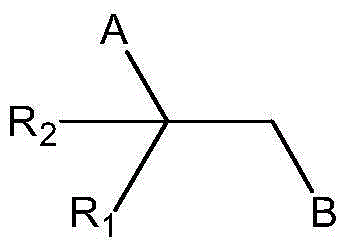A kind of intramolecular dehydration catalyst of amino alcohol, preparation method and application
A catalyst, amino alcohol technology, applied in chemical instruments and methods, physical/chemical process catalysts, organic chemistry, etc., can solve the problems of low catalyst activity and selectivity, reduced ethyleneimine selectivity, and short service life, etc. To achieve the effect of stable activity, improved diffusion effect and long life
- Summary
- Abstract
- Description
- Claims
- Application Information
AI Technical Summary
Problems solved by technology
Method used
Image
Examples
Embodiment 1
[0040] Prepare the catalyst TiP according to the stoichiometric ratio 0.2 B 0.01 Mg 0.1 Cs 0.01 o 2.62 :
[0041] Fully mix 97.86g of metatitanic acid, 26.4g of diammonium hydrogen phosphate and 0.618g of boric acid according to the stoichiometric ratio, then dissolve 14.8g of magnesium nitrate and 1.95g of cesium nitrate in water according to the stoichiometric ratio, and add the above solid mixture , evaporate and dry, then add graphite to the obtained mixture (the amount of graphite is 3% of the mass of the mixture), press molding, and dry at 120°C for 6h, bake at 350°C for 6h in air atmosphere, and bake at 600°C for 6h to obtain catalyst. The specific surface area was measured by low temperature nitrogen adsorption method to be 53.5m 2 / g, pore volume 0.26mL / g, average pore diameter 5.9nm.
[0042] The catalyst of this example is loaded into the reactor with a loading volume of 30mL, heated to a reaction temperature of 370°C, nitrogen as a protective gas, the gas vo...
Embodiment 2
[0044] Prepare the catalyst TiP according to the stoichiometric ratio 0.1 B 0.01 Ba 0.05 K 0.01 o 2.32 :
[0045] The metatitanic acid, ammonium phosphate and boric acid components are fully mixed according to the stoichiometric ratio, and the stoichiometric barium nitrate component and potassium chloride component are dissolved in water, added to the above solid mixture, evaporated and dried, and then the obtained Graphite was added to the mixture (the amount of graphite used was 4% of the mass of the mixture), press-molded, dried at 120°C for 6h, calcined at 350°C for 6h in an air atmosphere, and calcined at 700°C for 6h to obtain a catalyst. Its specific surface area is determined by low temperature nitrogen adsorption method to be 48.1m 2 / g, pore volume 0.21mL / g, average pore diameter 5.3nm.
[0046] This embodiment catalytic reaction condition and analysis condition are the same as embodiment 1. The conversion rate of ethanolamine is 35%, and the selectivity of et...
Embodiment 3
[0048] Prepare the catalyst TiP according to the stoichiometric ratio 0.05 B 0.02 Ba 0.1 K 0.01 o 2.27 :
[0049] Fully mix the metatitanic acid, ammonium dihydrogen phosphate and boric acid components according to the stoichiometric ratio, dissolve the stoichiometric barium nitrate component and potassium nitrate component in water, add to the above solid mixture, evaporate and dry, and then Graphite was added to the obtained mixture (the amount of graphite used was 1% of the mass of the mixture), press-molded, dried at 120°C for 6 hours, calcined at 350°C for 6 hours in an air atmosphere, and then calcined at 800°C for 6 hours to obtain a catalyst. The specific surface area is 51.2m2 measured by low temperature nitrogen adsorption method 2 / g, pore volume 0.26mL / g, average pore diameter 5.8nm.
[0050] This embodiment catalytic reaction condition and analysis condition are the same as embodiment 1. The conversion rate of ethanolamine is 49%, and the selectivity of eth...
PUM
| Property | Measurement | Unit |
|---|---|---|
| specific surface area | aaaaa | aaaaa |
| pore size | aaaaa | aaaaa |
| specific surface area | aaaaa | aaaaa |
Abstract
Description
Claims
Application Information
 Login to View More
Login to View More - R&D
- Intellectual Property
- Life Sciences
- Materials
- Tech Scout
- Unparalleled Data Quality
- Higher Quality Content
- 60% Fewer Hallucinations
Browse by: Latest US Patents, China's latest patents, Technical Efficacy Thesaurus, Application Domain, Technology Topic, Popular Technical Reports.
© 2025 PatSnap. All rights reserved.Legal|Privacy policy|Modern Slavery Act Transparency Statement|Sitemap|About US| Contact US: help@patsnap.com


